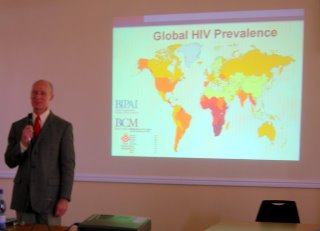Reparations in La Mancha - A patient encounter

She appeared tired, and it was not because of immunocompromise or illness, for her CD4 was quite high and her body showed no clinical evidence of HIV infection.
I told her this. She responded indifferently with the subtlest nod of recognition, her eyes never rising from her folded hands.
On her previous visit, she had been fast-tracked because her infant child was admitted in the local government hospital, and she had to return to the ward quickly to ensure her child was fed, medicated, and all of those hospital-specific activities that are handled by actual nurses when they are not overworked and under-trained.
This visit, the mother had waited in the queue with the rest.
While I wanted to believe that the child was playing happily and healthy at home, I knew the answer to the question I was about to ask.
“How is your baby?”
“He died,” she said, still looking down into her hands, which suddenly appeared quite empty.
The confirmation gave me that hellish feeling that one has when temporarily unable to convince himself or herself that the world is a good and fair place.
I said something to the empty-armed mother, something entirely inadequate. The well-intentioned words left my mouth with a pretense of grace and immediately fell to the floor with a clumsy thud.
They fixed nothing.
“What happened to the child?” I asked.
While she spoke in SiSwati, a swoop of her hand over her lap told me that the child’s belly had grown very large in the final days. She then held her hands out as if holding her child by the head and trunk, and brought them together, pantomiming the weight loss that preceded the child’s demise.
When she finished speaking, as a tear escaped the mother’s dulled, icy, otherwise indifferent eyes, the translator to me that “the stomach grew very big and the baby was losing weight. The baby died Saturday.”
The hellish feeling returned. I manufactured a few more well-intentioned, sympathetic words trying to inject something besides sadness into the sorrowful, hardened woman. I then wrapped up the visit, unable to repair the irreparable.
For an instant, I sat alone in my exam room wondering if addressing global pediatric HIV was somehow hopeless, absurd, quixotic.
Then, after the briefest instant, I decided it was not.
Ashamed that the thought even crossed my mind, I stood up to call the next patient.
Labels: Patient encounters, What am I up to?








